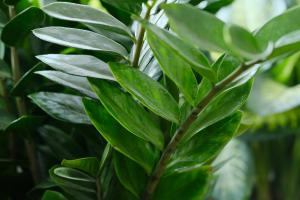Introduction
Plants are autotrophic organisms that require certain environmental conditions for growth and development. Light and water are two crucial factors that directly impact plant growth. In this article, we will discuss the effects of light and water on plant growth.
Effects of Light on Plant Growth
Light is essential for photosynthesis, a process through which plants produce their own food. Specifically, light provides energy for the process of synthesizing carbohydrates, which are necessary for growth and development. Without light, the growth of plants would be limited, and they would not be able to produce energy for themselves.
However, the intensity and duration of light can affect plant growth differently. Some plants require a lot of light, while others thrive in minimal light conditions. Light can also provide necessary information to plants that promote growth, such as the direction of gravity and the time of day.
Effects of Water on Plant Growth
Water is vital for plant growth and is required for many processes within the plant. For instance, water is necessary for photosynthesis and plays a significant role in the transportation of nutrients throughout the plant. Water also helps to maintain turgor pressure within the cell, which provides the plant with its structural integrity.
The amount of water a plant receives can significantly impact its growth. Too little water can cause a plant to wilt and ultimately die, while too much water can lead to root rot and other issues. The frequency of watering, as well as the quality of the water, can also impact plant growth. Some plants require more water than others, and the composition of the water, such as its pH level, can affect the availability of nutrients to the plant.
Interaction Between Light and Water on Plant Growth
The interaction between light and water can affect plant growth in significant ways. For example, plants that receive too much light and not enough water may suffer from water stress, which can impact growth and lead to decreased yield. Conversely, plants that receive too much water but not enough light may develop fungal issues and not grow as well as they could.
Additionally, the availability of water can impact the way a plant utilizes and stores light energy. Plants that experience drought stress may undergo physiological changes that allow them to survive on minimal light. However, this may also impact the quality of the crops produced. Albeit, plants that receive adequate water and grow in the presence of the right amount of light tend to grow better, produce more foliage, and have a more significant yield compared to plants that do not receive enough water or light.
Conclusion
In conclusion, light and water are crucial factors that affect plant growth. Light is necessary for photosynthesis, while water is needed to help with nutrient transportation and maintain turgor pressure. The interaction between the two can significantly impact plant growth, and finding the right balance between light and water is essential for optimal growth and yield.

 how many times do yo...
how many times do yo... how many planted tre...
how many planted tre... how many pine trees ...
how many pine trees ... how many pecan trees...
how many pecan trees... how many plants comp...
how many plants comp... how many plants can ...
how many plants can ... how many plants and ...
how many plants and ... how many pepper plan...
how many pepper plan...































